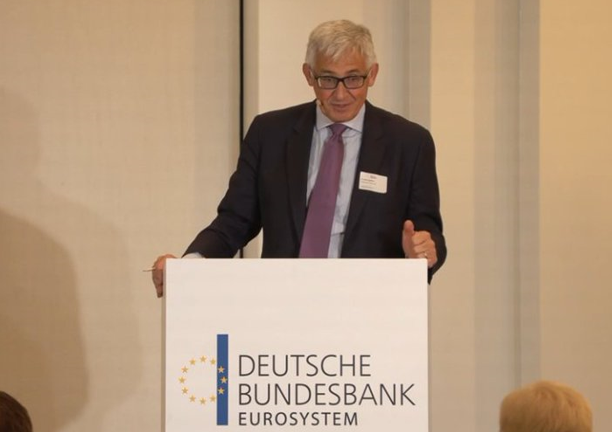
European Central Bank (ECB) director Piero Cipollone has proposed a bold vision for European capital markets through the creation of a European ledger. This ledger, envisioned as the "digital capital markets union," would use distributed ledger technology (DLT) to unify central bank money, commercial bank money, and digital assets on a programmable, shared platform.
"Imagine a future where money and securities no longer sit in electronic, book-entry accounts but “live” on distributed ledgers held across a network of traders, each with a synchronised copy," he said.
Addressing Fragmentation and Legal Challenges
Cipollone presented his vision during a keynote speech at the Deutsche Bundesbank-hosted conference on the Future of Payments. He called Europe’s financial systems fragmented with unharmonised legislation, where a unified ledger could be the answer.
"For example, there are 35 different exchanges for listings and 41 exchanges for trading," he pointed out.
The ECB has already been exploring DLT’s potential, coordinating Eurosystem trials for wholesale settlement using central bank money. With over 60 private sector organizations participating in these trials, Cipollone pointed to the strong interest in DLT despite the limited adoption of the EU’s DLT Pilot Regime.
The ECB is not the only company proposing a "one and only" ledger. The Bank for International Settlements (BIS) has proposed its own unified ledger, while a consortium of commercial banks and industry leaders is pushing for its own Regulated Liability Network (RLN).
The Promise and Risks of Tokenization
Other non-DLT unification initiatives are developing in the EU, such as the TARGET2-Securities (T2S) platform, which can transfer securities and cash between investors across Europe. However, Cipollone specifically emphasized the difference between traditional (messaging) and digital (tokenized) systems.
"..there is one crucial dimension that has often been overlooked, and that is technology"
Cipollone argued that tokenization and DLT could challenge longstanding structures of financial intermediation, offering a cleaner, more integrated approach to managing capital markets.
The traditional messaging system is basically a digitalized version of the centuries-old double-entry clearing system, which facilitated the settlement of foreign trades across separate, independent ledgers.
Cipollone suggested a completely new system considering the digital asset innovation:
My aim today is not to discuss how to create a capital markets union for traditional assets, but to discuss how to create one for digital assets from the outset.
According to Cipollone, the annual operational costs cost savings could be in the range of $15-20 billion USD in global capital markets.
At the same time, Cipollone identified "significant coordination challenges and risks to the financial system" in the early development of a unified ledger, such as the proliferation of alternative ledgers or alternative settlement currencies on the unified ledgers. He stressed that the exclusivity of the central bank's options is essential for maintaining the established status quo of the two-tiered banking system.
Sovereignty and the Digital Euro
The push for digital integration comes alongside the loss of sovereignty in payment systems to non-European entities like Visa and Mastercard. To address this, the European Payments Initiative (EPI) has set up a new European payment system called Wero. This, alongside the ECB's ongoing exploration of a digital euro, complements physical cash by offering a stable, secure digital payment method.
Notably, the proposed unified ledger is manifested primarily as a driver of capital market integration in Europe. Such "common rails" could serve as an excellent foundation for the digital euro, promoting competitiveness and independence of Europe’s financial system.
Balancing Innovation and Integration
Cipollone stressed that while a unified European ledger could enhance efficiency and integration, choosing the right technical approach would be critical. He was practical about the shortcomings, noting that relying on a single technology might stifle innovation, whereas encouraging interoperability across diverse networks would provide flexibility, albeit with some efficiency trade-offs in the short term.
“In embracing this technological shift, we are not merely reacting to change, but actively participating in shaping a more efficient, innovative, and resilient financial future for Europe,” Cipollone concluded.
This is an exciting moment for European banking and could signal change to come. We will be following this with keen interest.
